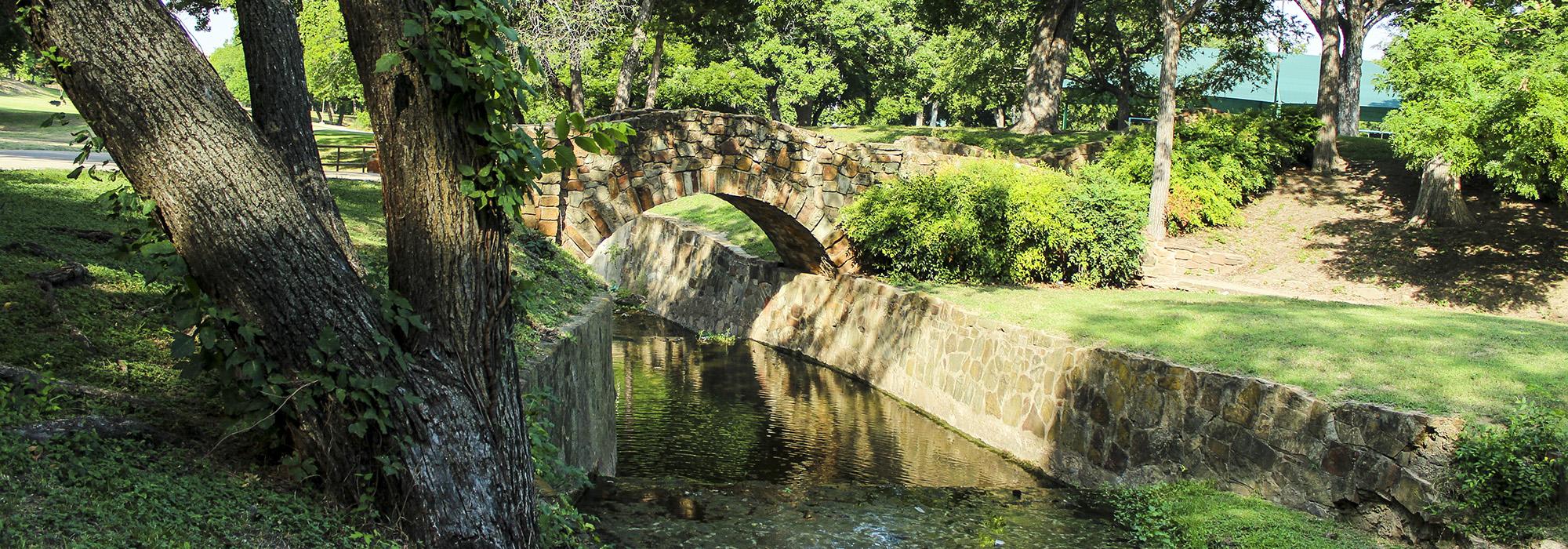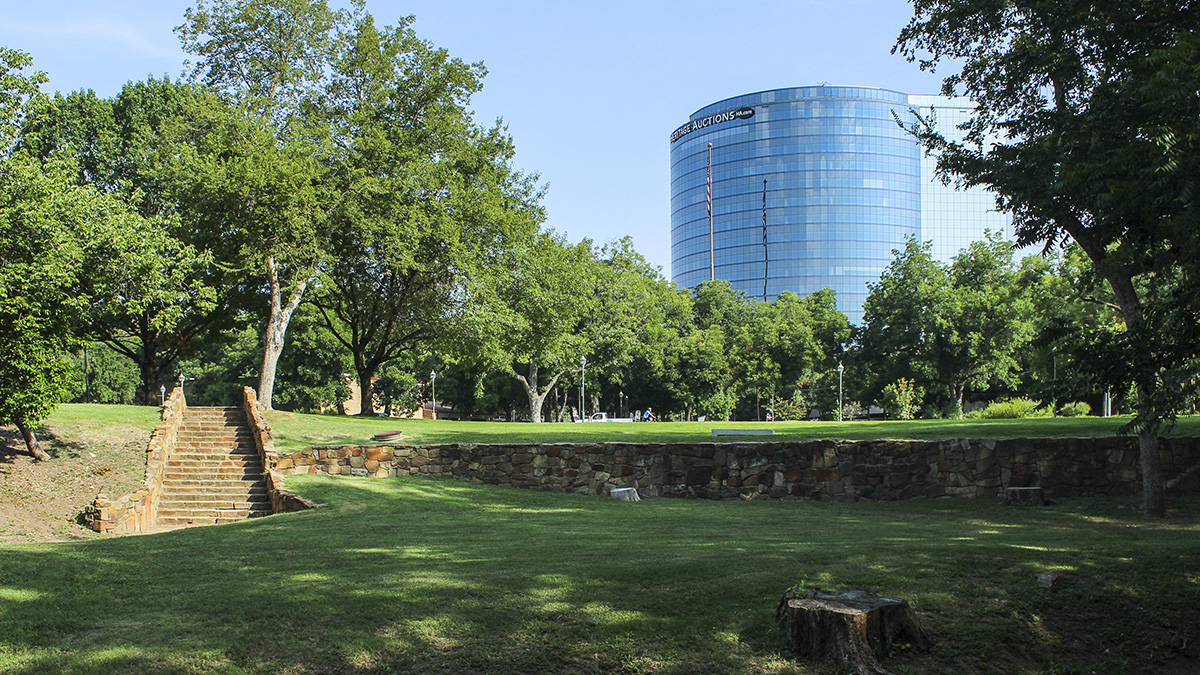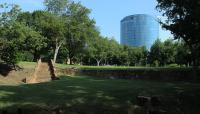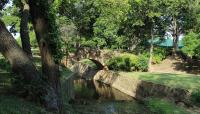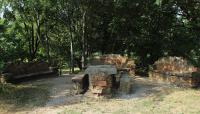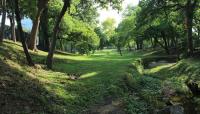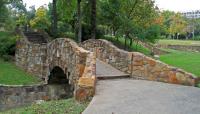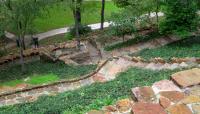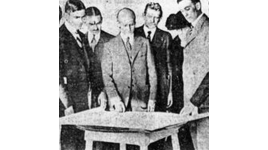Landscape Information
Built as the southern terminus to the Turtle Creek Parkway, the first 36 acres of the park were purchased in 1914 by the City as a means to clear the Woodchuck Hill slum. Originally named Turtle Creek Park, it was renamed in 1915 for noted French botanist Julien Reverchon who settled in the area.
The park was initially popular for mythical healing powers associated with the water from Gill Well, now buried, and for the baseball stadium, whose bleachers were erected in 1924.
The heart of the park is organized around meandering paths, a large play area, and groves of oaks and pecans. This area is nestled between two wooded hills on which the Works Progress Administration (WPA) created extensive stonework between 1935 and 1937. The western hill is crowned by a ring of stone benches surrounding a large stone picnic table, with the Iris Bowl, a small, stepped, stone amphitheater surrounded by beds of irises, at its northern base. The steeper, eastern hill is accessed by stairs that lead to stone seating and picnic areas that today connect with the Katy Trail, a former rail line. In 1946 the park was expanded to 46 acres with new land in the southeast corner, following a suggestion in the Hare and Hare Acquisition Plan. Turtle Creek once bisected the park, but around 1955 was largely diverted into a pressure sewer a few blocks north. Only the northern stretch remains open, with the WPA-constructed banks, stone bridge and a small dam still intact.



